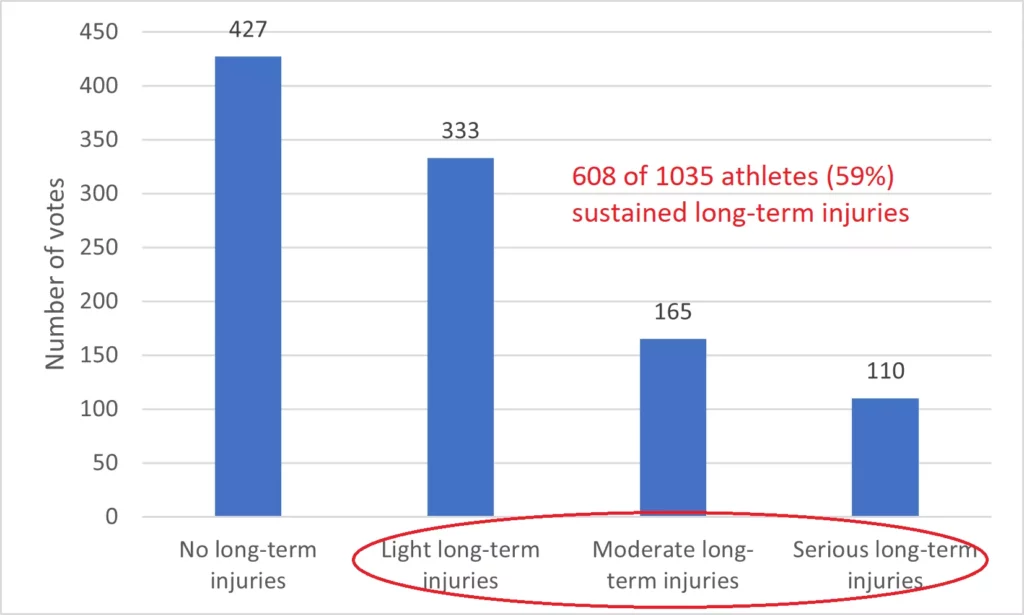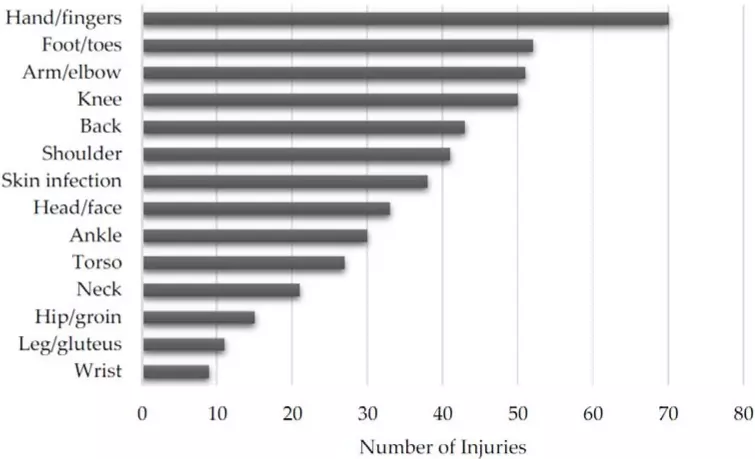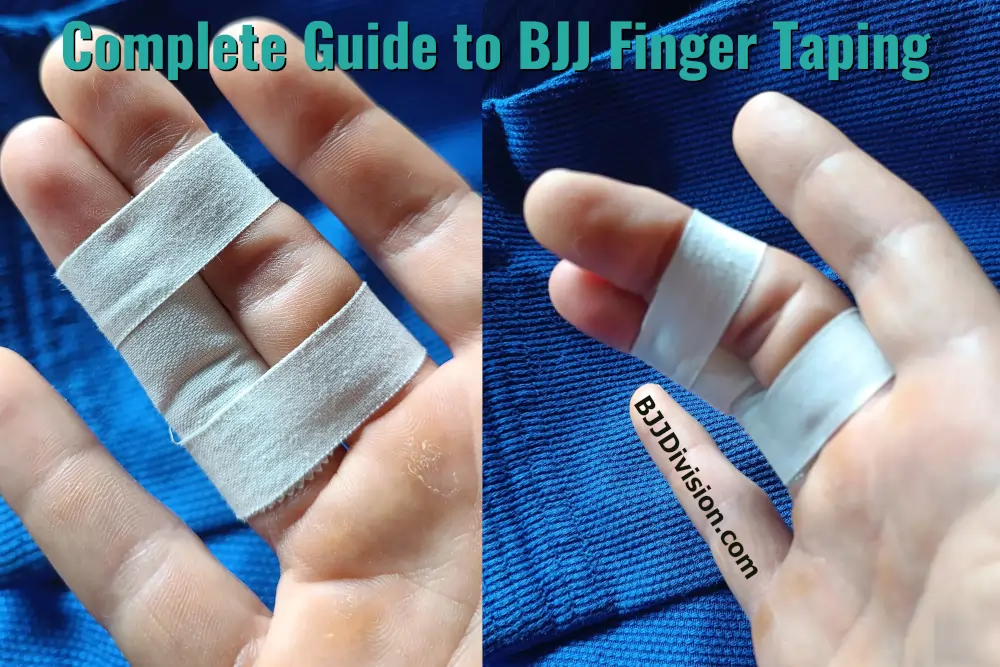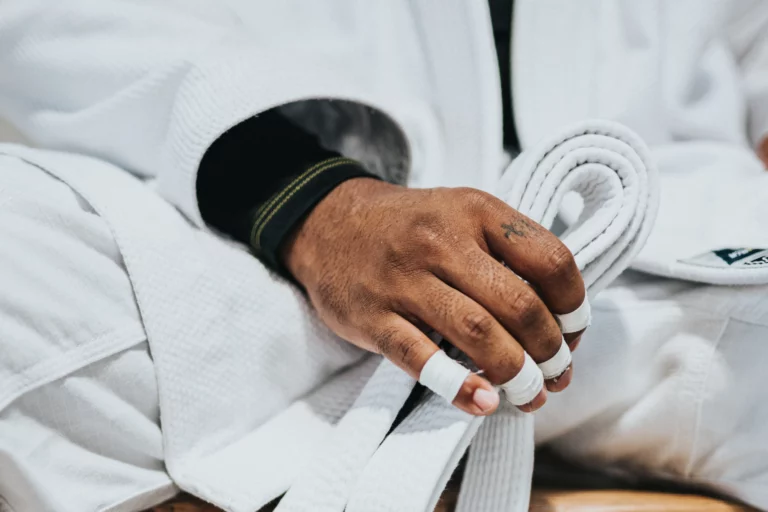BJJ Injuries: How Common are Severe Jiu Jitsu Injuries?

In Brazilian Jiu-Jitsu (BJJ), the goal is to control and defeat the opponent by using submission holds. These submission holds threaten to choke the opponent unconscious, break certain bones, dislocate joints, or tear ligaments. Therefore, there is a significant risk of injury in training and competing in Jiu Jitsu.
Minor injuries are very common in Brazilian Jiu-Jitsu. Serious injuries that require surgery or a long rehabilitation process are less common but unfortunately no exception.
The likelihood of injury highly depends on factors like injury location, training style and intensity, competitive and learning environment, age, and many more.
We prepared extensive BJJ injury statistics for you, so let’s jump right in.
BJJ Injuries FAQ
Here you can find the answers to frequently asked questions on Jiu Jitsu injuries:
How Common are Serious BJJ Injuries?
To get an overview of which serious injuries are most common we displayed the injury data collected on Beltchecker below.
According to Beltchecker’s data, knee injuries seem to be most prevalent among serious injuries in BJJ, followed by neck injuries and back injuries.
Keep in mind, athletes only register serious injuries that force them to take time off from training on Beltchecker. Minor injuries or injuries to smaller joints, like finger joints, usually don’t impact training a lot, so they are unlikely to get registered.

How common are Long-Term Injuries in BJJ?
Long-term injuries are defined as injuries that consistently have a negative impact on one’s day-to-day life off the mats. They significantly impact training capabilities over a long period.
A Reddit poll asked 1035 BJJ practitioners who trained in BJJ for more than 3 years about their experience with long-term injuries. There were 4 possible answers:
- No long-term injuries
- Light long-term injuries
- Moderate long-term injuries
- Serious long-term injuries
In the chart below you can see the results of the poll:

We can calculate that 608 of 1035 voters experienced long-term injuries due to training or competing in BJJ. This means there is a 59% risk of experiencing long-term injuries when practicing BJJ for at least 3 years.
Nevertheless, only about 11% of voters sustained serious long-term injuries. 16% of voters sustained moderate injuries, and most of them, roughly 32%, only sustained light long-term injuries.
The data might be biased since athletes usually only read through BJJ injury threads and articles after getting injured. This means the demographic of voters in the poll might have a higher rate of injury than the general demographic of BJJ athletes.
How Common are Minor Injuries in BJJ?
Minor injuries are extremely common in BJJ. Most practitioners experience some slight form of BJJ injuries or pain every week if they follow an intense and frequent training schedule. This can be especially irritating when starting in the sport. Nevertheless, most practitioners build up their pain tolerance fast.
Minor injuries are defined as injuries that don’t require intervention to fully heal. Usually, one can continue training while recovering from a minor injury with little to no drawbacks in training.
Examples are bruises, abrasions like mat burn, jammed fingers, stiff necks, and many more. Most of the time minor injuries can be handled by simply being careful in training and the use of sports tape or supportive clothing.
Check out our complete guide to finger taping for BJJ:
General Jiu Jitsu Injury Statistics
The bar chart below was created as part of a publicly available medical study from 2017 with the title “Prevalence of Injuries during Brazilian Jiu-Jitsu Training’“ The study confirmed our hypothesis that BJJ injuries to smaller joints, mostly the fingers and toes, are most likely.
The study gave further insides into different types of injuries: Athletes reported more frequent medically diagnosed injuries to the lower extremity and more frequent self-diagnosed injuries to the upper extremity. Additionally, upper extremity injuries appear to be more frequent but less severe when compared to lower extremity injuries in the BJJ athlete.
It is worth mentioning that skin infections were the most frequent medically diagnosed injury while only having a moderate prevalence when incorporating self-diagnosed injuries.

Risk of Injury in BJJ Competition
Competition vs Training
According to a publicly available study from 2019 with the title “Injury in Brazilian Jiu-Jitsu Training“, 60% of the participating competitive athletes experienced injuries in competition.
The same study found that 90% of recreational BJJ athletes sustained an injury while training. The study considered injuries of all severities and relied on the self-reporting of the athletes.
Nevertheless, the risk of injury is most likely a lot higher in a competitive setting. The only reason that most athletes are more likely to sustain injuries while training is that they spent much more time training than competing.
Competition Data
Another publicly available study from 2014 with the title “Assessment of Injuries During Brazilian Jiu-Jitsu Competition” examined more than 2500 competition matches, therefore examining almost 5,000 athletes. The study only recorded serious injuries.
For adult competitors, they found an injury incidence of 10.8 per 1000 competitors. This means only 1,1% of adult competitors sustained an injury in competition.
Most Common BJJ Injuries
Joint Injuries
Joint injuries are some of the most common injuries in BJJ. These can include sprains, strains, and tears to the knee, shoulder, finger, toe, and wrist joints. Joint injuries can be caused by sudden twists or awkward landings during training or competition.
We have prepared in-depth guides on how to treat and tape BJJ finger injuries and toe injuries for you.
Muscle Strains
Muscle strains are also common in BJJ, particularly in the neck, back, and adductors. These injuries are often caused by overuse, inadequate warm-up, stretching, or exceeding one’s range of motion.
Skin Infections
Skin infections such as ringworm, impetigo, and staph infections are common in BJJ due to the close contact between participants. Make sure to have proper hygiene, as these infections can spread quickly and are often difficult to treat.
Conclusion
Combat Sports are dangerous. There are ways to minimize the risk of injury and prevent injuries in BJJ, but unfortunately, there are no guarantees. Depending on your training frequency and intensity, injuries are unavoidable at some point in time.
Many athletes might be tempted to quit after sustaining an injury, but most do not. The reasons are obvious. Jiu-Jitsu is also very healthy in many ways. Training BJJ strengthens your muscles, builds a great physique, sharpens your mind, improves your flexibility, improves your cardiovascular health, and enables you to defend yourself.
Be aware of injuries and train accordingly, but do not let fear guide you.
Which injuries did you have to face on your Jiu Jitsu journey so far? Comment below.







